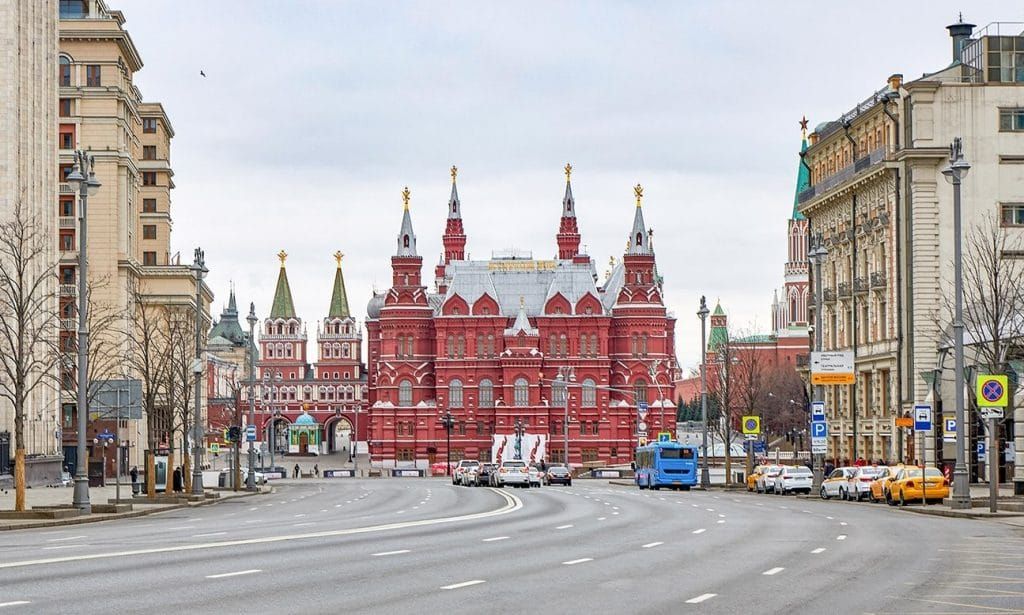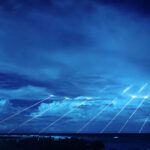How Biden can make Russia’s nuclear policy nonprofits great again
By Aleksandr S. Kolbin | November 12, 2020
 Tverskaya St. in Moscow. Just up the street is the Carnegie Endowment for International Peace's Moscow office. Photo credit: Creative Commons
Tverskaya St. in Moscow. Just up the street is the Carnegie Endowment for International Peace's Moscow office. Photo credit: Creative Commons
On August 12, 1992, several months after the Soviet Union had bit the dust, Boris Yeltsin, the first president of Russia, signed Special Order no. 873, providing the DC-based Carnegie Endowment for International Peace office space in Moscow on the famed Tverskaya Street. It was one of several moves that would pave the way for establishing Russia as a huge underserved “market” for US academic programs, private foundations, and governmental agencies focused on nonproliferation research and advocacy for a world free of nuclear weapons. But more important was that the activities (and funding) of those programs and foundations helped establish several Russian nongovernmental organizations (NGOs) focused on nonproliferation—something that would have hardly been possible in Soviet times. These organizations included the PIR Center; the Center for Energy and Security Studies; the Center for Arms Control, Energy, and Environmental Studies; the Siberian Interuniversity Center for Non-Proliferation and Security Studies; and a number of others. And they truly relied on the financial and ideological support of the US and global nonproliferation community during that time.
Other new domestic policies opened the door even further. For example, a 1990 law “On public associations” allowed the Ministry of Justice to register 3,214 new NGOs in the five-year period of 1991 to 1996 alone. NGOs also received major tax breaks and were allowed to receive foreign financing. And undergirding all of these policies was the new Russian leadership’s readiness for dialogue with the United States and the West in general. In short, it was a once-in-a-lifetime opportunity for these nonprofits to directly influence and shape Russia’s official nonproliferation and arms control policies and discourse.
During the 1990s and early 2000s, communication between Russian nongovernmental organizations and the Russian government went mainly through officers at the Foreign Affairs and Defense Ministries. Those officers were members of advisory boards and ad hoc working groups that operated under this or that NGO brand. Being a part of such boards and groups, those officers agreed to adhere to their respective NGO’s program priorities and write research papers and columns for its magazines and online publications. As the Ploughshares Fund put it in its 2006 annual report, one of those Russian organization’s “impact on the policymaking community in Russia has been extraordinary,” with an “advisory board that included former military officials” and “seminars and trainings for Duma members.” Russian official doctrinal documents treated the notion of nonproliferation as a universal value, and leading state universities began including courses on it in their curricula.
The direct consequence of that influence was the Russian government becoming more ready to join a number of post–Cold War arms control and nonproliferation initiatives. Foundations such as the Nuclear Threat Initiative, Ploughshares, and the MacArthur Foundation invested hundreds of thousands of dollars into the projects of Russian nonproliferation NGOs aimed at topics ranging from supporting nonproliferation education and US–Russia arms control dialogue to accelerating the blend-down of highly enriched uranium. Almost every one of those projects implied the participation of the Russian government’s officers in one or another format, whether expert roundtables, conferences, or publications. Some of those projects were the only tools by which to mobilize civil society and expert community pressure on the Russian government to negotiate new arms control and nonproliferation arrangements with the United States. The influence on and communication channels with the Russian politico-military establishment survived both the indefinite extension of the Nuclear Non-Proliferation Treaty in 1995 and the 2003 Iraq War.
But all that support from US sources dried up beginning in 2012. It could not survive the dramatic deterioration of Russia’s relations with the West and the Trump administration’s approach toward nonproliferation research and cooperation. In 2012, the Russian Parliament passed new amendments to the “Non-Commercial Organizations” law and listed some of the nonproliferation organizations in Russia as “foreign agents.” Then, in 2015, 23 years after Boris Yeltsin’s order, president Vladimir Putin signed legislation allowing prosecutors to deem foreign or global NGOs as “undesirable.” The label can be assigned to any international NGO that “threatens Russia’s constitutional order, defense potential, or security.” Once so labelled, an organization loses its rights to publish media materials, organize rallies, and use local bank accounts.
The 1987 Intermediate-range Nuclear Forces Treaty, the 2000 Plutonium Management and Disposition Agreement, the 1994 Budapest Memorandum, the Nunn-Lugar program, and even the 2010 New Strategic Arms Reduction Treaty are all being destroyed exactly at a time when the NGOs in Russia are facing challenges and restrictions. Almost all major US foundations that supported Russian nonproliferation NGOs have been forced to either leave the country (as happened with MacArthur Foundation) or self-restrict their support to purely educational projects in order not to jeopardize their Russian partners’ standing. Because receiving foreign funds had become much more complicated, some Russian NGOs were forced to switch to Russian government-oriented funds, sacrificing much of their independence from the Russian authorities.
Today, the Russian nonproliferation NGO community and its Western partners have failed in their mission as it was defined back in the 1990s. The results they have achieved seem to be the opposite of the ideas they originally set, which were to help to ensure Russia’s acceptance of and adherence to the system of nuclear nonproliferation and arms control agreements after the end of the Cold War, and thus to reduce the risk of nuclear escalation.
Whether those US foundations and programs, along with the Russian NGOs’ own activities in Russia, contributed to Russia’s nuclear arms control revisionism after 2012 deserves separate and substantial research. But what is important now is what can be done in the current circumstances to revive those nongovernmental organizations in Russia as a means of communicating ideas from Russian and US outside experts to Russian and US policy makers.
While it is hard to imagine that foreign funds will be allowed to finance Russian nonprofit activities in the foreseeable future, it is imperative to ensure dialogue between the two countries—not only at the intergovernmental level, but at the level of nongovernmental experts as well.
In that regard, the newly-elected US administration, once in the office, could suggest to both US and Russian experts that they combine efforts to find a way out of the current deadlock in bilateral arms control. It is true that Russian NGOs have lost a major part of their financial support from US sources and feel a greater need to support the Russian government’s national priorities. But the way to revive these organizations could be more straightforward than it seems at first sight.
A Biden administration could also help reinstate the role of Russian nonproliferation NGOs in bilateral dialogue. In particular, it could encourage negotiators on both sides to tap into US and Russian NGOs’ expertise and experience in discussing modern arms control and nonproliferation issues. If successful, it may force the Russian government to increase its support to Russian NGOs through its own sources and to more actively involve the Russian expert community in shaping Russia’s position on arms control and nonproliferation.
In the end, the US nonproliferation expert community has itself suffered from four years of the Trump administration’s hostility (although that feeling was mutual in some sense), and its relations with its own government will require some healing. But with the right approach, Biden can help make Russian (and US) nonproliferation NGOs great again.
Together, we make the world safer.
The Bulletin elevates expert voices above the noise. But as an independent nonprofit organization, our operations depend on the support of readers like you. Help us continue to deliver quality journalism that holds leaders accountable. Your support of our work at any level is important. In return, we promise our coverage will be understandable, influential, vigilant, solution-oriented, and fair-minded. Together we can make a difference.
Keywords: NGOs, Russia, United States, nuclear policy, think tanks
Topics: Nuclear Risk, Opinion
















It was the US that started the hostilities when Bush walked out of the 1972 ABM treaty in 2001, after Clinton expanded NATO up to Russia’s borders, despite promises given to Gorbachev by Reagan that after the wall fell NATO would not expand one inch to the east of a united Germany. Clinton also bombed Kosovo, over Russia’s veto in the Security Council breaking our treaty obligation never to commit a war of aggression without Security Council approval, unless we were under imminent threat of attack. He rejected Putin’s offer to cut our arsenals to 1,000 or 1,500 warheads each… Read more »
Would Alice Slater be willing to share her contact information so a dialogue can be initiated as the comment section here is a somewhat limited? I wouldpropose that the “arms race” might be explained with a few graphics I created, one of which was published by OSD this summer. Since the end of the Cold War, Russia has or will deploy 31 NEW types of nuclear platforms and delivery vehicles; at a rate slightly less but nearly as rapid as during the height of the Cold War. Since the US stopped production of the Peacekeeper, Ohio class submarine, D-5 missile… Read more »
Russia ratified the CTBT, the US did not. Indeed when Clinton signed the CTB in 1992 he made a deal with the weapons labs to give them 6 billion+ dollars for the “ stockpile stewardship” program which enables our Doctor Strangeloves to continue to blow up plutonium with high explosives 1000 feet below the desert floor on the Western Shoshone holy land, but since they don’t create a chain reaction, Clinton said it wasn’t a nuclear test. That was accompanied by advanced laboratory tests and developments in computer simulations. Later this ongoing program wound up in the obscene deal that… Read more »